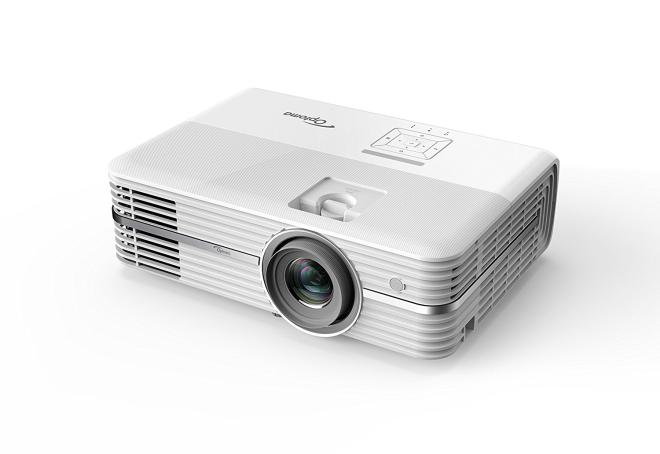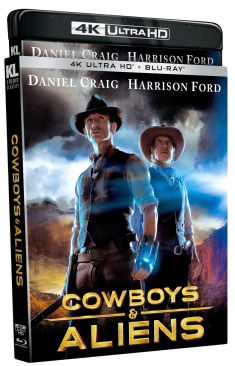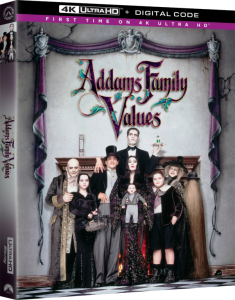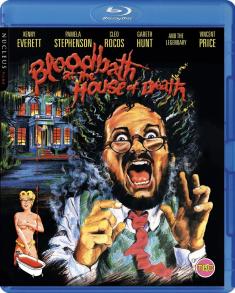Optoma UHD50 4K Ultra HD Home Theater Projector
Overview -Overview - With a price point under $1,500, the new Optoma UHD50 DLP home theater projector brings true 4k Ultra HD resolution and a host of other features that look great when listed on a spec sheet to the entry-level market. Unfortunately, the projector's poor picture quality undermines its potential value. Skip it.
INTRO
For as quickly as 4k Ultra High Definition has taken over the HDTV market, home theater projectors have been slower to adopt the format. This is frustrating on many levels. Even as flat-panels have crept up in size to around the 100" range, they still have a practical limit to how large the TV can be and fit through your door or maneuver around a corner into your room before you install it. Until rollable OLED screens become a reality in a price range that regular mortals can afford, projectors remain the only way to get a huge, enveloping picture in a dedicated home theater room. It is a sad irony, therefore, that high-end home theater installations have lagged behind during the 4k revolution.
To date, most of the 4k projectors on the market have either been prohibitively expensive and/or have not been able to produce the full definition of "Ultra HD" resolution. JVC's e-Shift line of projectors, for example, use pixel-shifting to double a 1920x1080 panel in two directions, but those pixels overlap so you don't truly see 3840x2160 resolution on the screen. This method (frequently dubbed "Faux-K") has its benefits, and it's still decidedly an improvement over 1080p, but falls short of the ideal resolution potential of UHD.
Last year, Optoma's UHD60 DLP projector brought true 4k resolution to market with an MSRP just under $2,000. This year, the recent introduction of Texas Instruments' smaller 0.47" UHD DMD panel is driving competition even further down in price. Optoma's new UHD50 model promises 4k resolution, HDR technology for a stated contrast range of 500,000:1, and support for the HDR10 and DCI-P3 wide color gamut formats – all for under $1,500. By all appearances, this seems to be a tremendous breakthrough product.
I truly wish the results I saw on my screen lived up to any of those claims. Even for its price, this projector is a big disappointment.
SPECS
From Optoma.com
INSTALLATION & SET-UP
The UHD50 is a very compact projector at 15.4" x 11.1" and just under 12 lbs. Its white finish will probably blend nicely enough when mounted in a room with a white ceiling, such as a living room or great room intended to be used for other purposes with some home theater duty on the side. However, my own light-controlled theater room has dark-colored walls and ceiling, and this projector stood out pretty badly in it. On the list of concerns, that one's rather petty, but I felt it was worth noting.
Upon unboxing, the projector comes packaged with a remote control (plus batteries for it), a power cord, a very short HDMI cable (which I did not use), and a comically brief owner's manual that is literally only one page long. (The company would like me to refer to this as a "quick start guide," but the page has the words "Basic User Manual" right on it.) The sheet provides very simple, Ikea-like illustrated instructions for how to turn the projector on, where to plug cables into it, and how to adjust the lens controls. A more detailed manual should be available online.
The UHD50 has a fairly short throw ratio of between 1.21 to 1.59, with a rather limited 1.3x optical zoom. (It's not technically a "short throw" projector, but it's shorter than many comparable models.) On the plus side, this means you can project a large picture from not very far back in the room. Many users may find this appealing. Personally, I struggled to find good placement for it in my room. The very high picture offset effectively means that the projector needs to be either ceiling mounted or placed on a table low to the ground. Putting it on a shelf at screen level will leave you with an image shining onto your ceiling. I had no intention of installing a new ceiling mount just for this review. With my room depth and screen size, I practically had to sit the projector in my lap just to get an image to fit on my screen. Although the unit offers 15% vertical lens shift, that realistically only amounted to moving the image up or down a few inches.
Ultimately, I managed a compromise by placing the projector on a table directly behind my chairs, just a few inches from my head. This became an ordeal when I had to spread my seats further apart to prevent the chair backs from blocking the light path. While I'm sure that not every owner will have such problems, I highly recommend taking these concerns seriously and doing all the math regarding throw ratio and offset before purchasing. Optoma provides a distance calculator on its web site that should help.
The projector has two HDMI inputs on the back panel, but only one of them (clearly labeled) can accept a 4k input signal. All zoom, focus, and lens offset controls must be performed manually from the lens ring. The UHD50 has no automated lens controls.
The UHD50 also has very limited support for 3D. It will only accept 3D in side-by-side or over/under formats, not the frame-packed 3D available on Blu-ray disc. (Optoma did not provide the necessary 3D glasses with the review sample, so I was not able to test this feature for the review.) If 3D is an important feature for you, Optoma's upcoming UHD51A model will be essentially the same projector as this, but with full 3D support and a few other features such as Alexa control. The UHD51A will also come in a black case rather than white.
Upon turning it on, the first thing you'll note is how loud this projector is. The UHD50 defaults out of the box to "Bright" lamp mode, which kicks the fan into high speed. On top of that, the DLP color wheel buzzes loudly, and the processing chip that wobulates the 1080p DMD panel up to 4k emits a constant high-pitched whine. It starts out distractingly enough when fed a 24p input signal and gets even louder when you switch to 60 Hz content. Admittedly, the close proximity I had the projector to my head may have accentuated this problem, but plenty of other early adopters have also complained about it. While actually watching content, most movie and TV soundtracks will likely drown out the majority of the noise, but it will pierce through any quiet scene. Frankly, I suspect that this alone may be a deal-breaker for many potential buyers, with good reason.
PERFORMANCE
Here's where the bad news really kicks in. The UHD50's picture quality is, honestly, kind of terrible. I was tremendously let down by it. But let me work up to that.
First, be aware that one of the downsides of the 0.47" DMD panel (reduced in size from the 0.66" DMD in last year's UHD60 model) is that it emits a light gray border a few inches wide around all sides of the picture. (The recent BenQ HT2550 has the same panel and does the same thing.) In my case, I wasn't too bothered by this because my dark wall color absorbed most of it, but it may be more problematic for someone whose screen is mounted on a white wall.
The way this DMD achieves UHD resolution is by starting with a 1920x1080 pixel grid and shifting it rapidly in four directions. This produces 3840x2160 addressable pixels with (unlike JVC's e-Shift technology) no overlap. As much as that sounds like a good thing, the reality is that (at least with this small 0.47" DMD), the increase in resolution is barely noticeable outside of resolution test patterns and perhaps computer text.
Of course, it's long been known that the true benefit of the Ultra High Definition format is not its extra pixel resolution, but rather its addition of High Dynamic Range contrast and Wide Color Gamut. Optoma's marketing materials boast of "HDR technology with HDR10 and DCI-P3 wide color gamut support for brighter whites, deeper black-levels and vivid color." The company states that the RGBRGB color wheel can hit 75-80% of the DCI-P3 color standard, which is respectable for a UHD home theater projector. Its black levels, on the other hand, I would not classify as deep at all. The projector's greatest failing by far is contrast, which is simply awful, and its implementation of HDR actually makes the picture worse, not better.
Out of the box, the UHD50 comes set for what is colloquially known as "Torch Mode" with color controls cranked up and every alleged enhancement feature maxed out. Most of them do more harm than good. The only way to dial the lamp down is to turn off the Dynamic Black feature first and then switch from the "Bright" lamp setting to the lower "Eco" mode (which is not much dimmer, but at least reduces fan noise a little bit). Be aware that turning Dynamic Black back on will override whichever lamp setting you've chosen.
The UHD50 produces a very bright image. This will be useful for viewers with very large screens. Unfortunately, its black level is extremely elevated, even in Eco mode, creating at best a milky gray on my screen. Optoma claims a 500,000:1 contrast ratio with Dynamic Black engaged. This is clearly ridiculous. I suppose you could make the argument that starting with a very high black floor and then rising super-bright from there technically counts as "contrast," but from what I can tell, Dynamic Black amounts to some gamma manipulation and artificial contrast boosting that badly crushes detail in both blacks and whites. Test patterns reveal that, even with Dynamic Black off, the projector is incapable of producing black detail below 2%. Dynamic Black does nothing to lower the black floor or improve shadow detail. With it on, contrast patterns are a solid white, completely crushed across the range with no detail at all. Outside of test patterns, I experienced an increase in banding and pixelation artifacts that made the feature unusable to me.
I got my best results, inasmuch as I got good results at all, by turning the Dynamic Black, BrilliantColor, and Ultra Detail enhancement features all off. I set Display Mode (whatever that is) for Cinema, Gamma for 2.2, Color Gamut for Native, and HDR for Film. I will not pretend to be confident in any of these settings. I went back and forth with other options on some of them, unsure which I preferred.
What Optoma calls HDR on this projector is not genuine High Dynamic Range. Watching Ultra HD Blu-rays with my player set to output HDR10 resulted in the movies looking like their contrast was artificially jacked up and their colors were oversaturated. They looked worse than simply watching the regular Blu-ray editions. By turning off HDR at the source and using the OPPO UDP-203 player's tone-mapping controls, I was able to bring the UHD picture in line with the Blu-ray. What, though, is the point of that? It'd be easier to just watch the 1080p disc. In either case, the lack of true contrast left movies looking flat and dull.
For my review, I did a rudimentary calibration with some test discs. The projector has a Color Management System that may allow for a more advanced calibration, but I didn't bother with it. Even if that might result in some improvement, I cannot imagine that anyone buying a $1,500 projector really intends to pay for ISF calibration on it, much less to purchase a colorimeter, test pattern generator, and the necessary software to do it themselves. That does not seem like a realistic expectation for this product. Moreover, no amount of calibration will ever make a significant difference to the black level or contrast of this projector. Honestly, why would anyone even bother? That money and effort would be better spent by purchasing a better projector.
FINAL THOUGHTS
- 4K resolution with 3840x2160 addressable pixels
- Very bright
- Shorter throw than some comparable projectors
- Vertical lens shift
- Affordable price
- Very poor contrast and black levels
- Light border around the image
- Limited support for 3D
- No automated zoom, focus or lens shift
- Noisy operation
As a point of reference, I currently have two other projectors in my home theater, one JVC D-ILA and a Sharp DLP. Both are 1080p models, from 2011 and 2012 respectively. Both produce significantly better pictures than the brand new Optoma UHD50, despite its 4k resolution and alleged HDR.
JVC's projectors are renowned for their great contrast (and the one I have came from a higher price bracket), so that's perhaps not a fair comparison, but even my six-year-old DLP is a better projector than the UHD50. It has much better black levels and contrast as well as a great deal more lens shift for easier placement flexibility – and that's the less expensive and weaker of my two projectors. I felt a great relief switching back to that one when I finished my testing of the Optoma.
Looking at its published specs, the Optoma UHD50 would appear to be a great budget projector with all the latest bells and whistles for a very appealing price. Regrettably, in actual usage, its poor contrast and general picture quality are not the bargain they seem to be. I cannot recommend it. You can get better performance out of a 1080p projector for the same amount of money or less. If you're set on wanting 4k, you'd be wiser to save your money and wait until you can afford something better.
[Note: This review has been updated since publication to correct statements about color gamut support.]

















